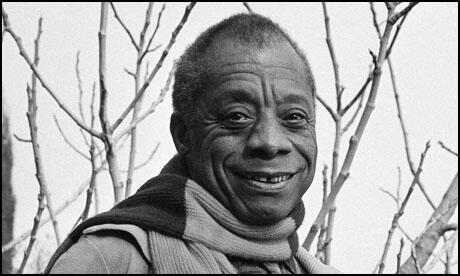On this day on 1st December
On the day in 1135 Henry I died and under the agreement signed in 1125, Matilda should have become Queen of England. The Normans had never had a woman leader. Norman law stated that all property and rights should be handed over to men. To the Normans this meant that her husband Geoffrey of Anjou would become their next ruler. The people of Anjou (Angevins) were considered to be barbarians by the Normans.
Most Normans were unwilling to accept an Angevin ruler and decided to help Matilda's cousin, Stephen, the son of one of the daughters of William the Conqueror, to become king. According to the author of The Deeds of King Stephen (c.1150), Stephen persuaded the people to support him by a mixture of bribes and threats. (14) Crowned king at Westminster Abbey he was also given the title of Duke of Normandy. "Stephen shrewdly issued a charter of liberties promising to respect all the laws and customs of the realm.
Matilda reacted by establishing herself at Argentan Castle. Her third son, William, was born on 22nd July 1136. Geoffrey Plantagent led annual raids into Normandy but was unable to gain complete control of the area. The situation improved in 1138, when Matilda's half-brother, Robert, 1st Earl of Gloucester, renounced his allegiance to Stephen, after an attempt had been made to assassinate him.
Gilbert Foliot, the abbot of Gloucester, claims that Robert changed sides because of his reading of the Book of Numbers. "It seemed to some that by the weakness of their sex they should not to be allowed to enter into the inheritance of their father. But the Lord, when asked, promulgated a law, that everything their father possessed should pass to the daughters".
Earl Robert attacked Stephen's forces in the west of England. He then travelled to Normandy and joined Geoffrey Plantagenet in an attempt to take control of the region. This was unsuccessful and Stephen was also able to capture Robert's castles in Kent. Robert returned to England and in November, 1139, his army managed to capture Worcester from King Stephen.
Stephen was eventually captured at the Battle of Lincoln (February, 1141). Stephen had promised the people of London more self-government. This helped him gain their support in the civil war. Matilda upset them by imposing a tax on the city's citizens. When Matilda went to be crowned the first queen of England, the people rebelled and she was forced to flee from the area.
In September 1141, Robert, earl of Gloucester, was captured at the ford of Stockbridge by Flemish mercenaries under the command of William de Warenne, earl of Surrey. He was imprisoned first at Rochester, then moved back to Winchester, so as to assist the negotiations to exchange him for the king. Stephen was released on 1st November and Robert two days later.
In Normandy, Geoffrey Plantagenet, was making good progress in taking control of the region. Matilda's army was forced to retreat to Oxford where she was besieged. In December, 1141, she escaped and managed to walk the eight miles to Abingdon. Eventually, she established herself in Devizes and controlled the west of the country, whereas Stephen continued his rule from London.
Dan Jones, the author of The Plantagenets (2013), has pointed out: "Stephen and Matilda both saw themselves as the lawful successor of Henry I, and set up official governments accordingly: they had their own mints, courts, systems of patronage and diplomatic machinery. But there could not be two governments. Neither could be secure or guarantee that their writ would run, hence no subject could be fully confident in the rule of law. As in any state without a single, central source of undisputed authority, violent self-help and spoliation among the magnates exploded.... Forced labour was exacted to help arm the countryside. General violence escalated as individual landholders turned to private defence of their property. The air ran dark with the smoke from burning crops and the ordinary people suffered intolerable misery at the hands of marauding foreign soldiers."
Stephen was accused of waging war on his own people. One anonymous chronicler wrote: "King Stephen set himself to lay waste that fair and delightful district, so full of good things, round Salisbury; they took and plundered everything they came upon, set fire to houses and churches, and, what was a more cruel and brutal sight, fired the crops that had been reaped and stacked all over the fields, consumed and brought to nothing everything edible they found. They raged with this bestial cruelty especially round Marlborough, they showed it very terribly round Devizes, and they had in mind to do the same to their adversaries all over England".
A. L. Morton has argued that the civil war brought out the "worst tendencies of feudalism" and during this period "private wars and private castles sprang up everywhere" and "hundreds of local tyrants massacred, tortured and plundered the unfortunate peasantry and choas reigned everywhere". Morton claims that this "taste of the evils of unrestrained feudal anarchy was sharp enough to make the masses welcome a renewed attempt of the crown to diminish the power of the nobles."
In 1147, Geoffrey and Matilda's, fourteen-year-old son, Henry arrived in England with a small band of mercenaries. His mother disapproved of this escapade and refused to help. So also did Robert, 1st Earl of Gloucester, who was in charge of Matilda's forces: "So with the impudence of youth he applied to the man against whom he was fighting and with characteristic generorosity Stephen sent him enough money to pay off his mercenaries and go home."
The Deeds of King Stephen reports that "Matilda, Countess of Anjou, who was always above feminine softness and had a mind steeled and unbroken in adversity.... She began to assume the loftiest haughtiness of the greatest arrogance - not now the humble gait of feminine docility, but she began to walk and talk more severely and more arrogantly than was customary, and to do everything herself. " Lisa Hilton, the author of Queens Consort: England's Medieval Queens (2008) has pointed out that "these traits... would not have been so greatly criticized had they been displayed by a man."
The following year Matilda decided to abandon her campaign to gain control of England. She had been unable to unite the barons behind her. William of Newburgh blamed it on her "intolerable feminine arrogance". Her biographer, Marjorie Chibnall, suggested that she did indeed lack certain leadership qualities: "Matilda had shown on the height of her power that she had neither the political judgement nor the understanding of men to enable her to act wisely in a crisis."
Matilda returned to Normandy which was now under the control of her husband, Geoffrey Plantagent. She lived in the priory of Notre-Dame-du-Pré. Over the next few years Matilda was able to combine active involvement in the business of the duchy with a semi-religious retreat. She also helped to finance the building of a new stone bridge over the Seine, linking Rouen with the royal park at Quevilly and the priory of Le Pré.
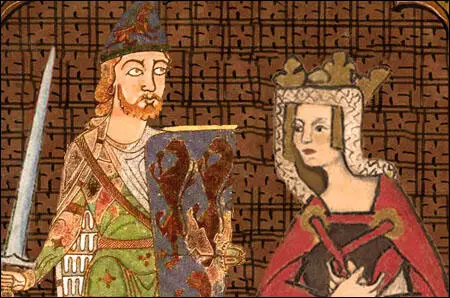
On the day in 1577 Francis Walsingham is knighted. In December 1573 Queen Elizabeth appointed Walsingham as her Principal Secretary and on the following day a Privy Councillor. As Simon Adams has pointed out: "This was the final stage of the first major reshaping of Elizabeth's privy council since the beginning of the reign. After the appointments of Leicester and Norfolk in 1562 the privy council had remained effectively static, except for the deaths of older members (six, all peers, died between 1570 and 1573) and their replacement. There was an established inner ring of Cecil, Leicester, and Sir Nicholas Bacon, whom Elizabeth showed no desire to change. What initiated the reshaping was Cecil's creation as Baron Burghley on 25 February 1571."
Walsingham, who specialized in foreign affairs, advocated an aggressive policy in favour of Protestants in Europe. He became convinced that King Phillip II of Spain, who had been Queen Mary's husband, wanted to make England a Catholic country. He therefore set up a network of spies and agents to prevent this from happening. One of the men who Walsingham was very concerned about was Francis Throckmorton, one of England's most prominent Catholics. In April 1583 Walsingham received a report from Henry Fagot, his agent inside the French embassy, that Throckmorton had dined with the ambassador. A month later Fagot wrote again with the information that "the chief agents for the Queen of Scots are Throckmorton and Lord Henry Howard".
In November 1583, Walsingham ordered the arrest of Throckmorton in his London home. He just had time to destroy a letter he was in the act of writing to Mary Stuart, but among his seized papers was a list of the names of "certain Catholic noblemen and gentlemen" and also details of harbours "suitable for landing foreign forces". At first Throckmorton denied they were his, saying they must have been planted by the government searchers. He later admitted that they had been given to him by a man named Nutby who had recently left the country.
Walsingham had Throckmorton put on the rack. During the first two sessions he courageously refused to talk. He managed to smuggle a message out to Bernardino Mendoza, the Spanish ambassador, written in cipher on the back of a playing card, saying he would die a thousand deaths before he betrayed his friends. However, on the third occasion he admitted that Mary Queen of Scots was aware of the plot against Elizabeth. He also confessed that Mendoza was involved in the plot. When he finished his confession he rose from a seat beside the rack and exclaimed: "Now I have betrayed her who was dearest to me in this world." Now, he said, he wanted nothing but death. Throckmorton's confession meant that Walsingham now knew that it was the Spanish rather than the French ambassador who had been abusing his diplomatic privileges.
At his trial Francis Throckmorton attempted to retract his confession claiming that "the rack had forced him to say something to ease the torment". Throckmorton was executed at Tyburn on 10th July 1584 and was reported to have died "very stubbornly", refusing to ask for the Queen Elizabeth's forgiveness.
To keep his network running smoothly, Walsingham established a spy-school in his own London house. His school taught cipher and forgery and gave potential agents training in field-work. His most successful graduate was Thomas Phelippes. He was described at the time as a man "of low stature, slender every way, dark yellow haired on the head, and clear yellow beared, eaten in the face with smallpox, of short sight, thirty years of age by appearance." Phelippes was a linguist who could speak French, Italian, Spanish, Latin and German. He was also one of Europe's finest cryptanalysts.
In October 1585, Gilbert Gifford went to Paris, where he got in touch with Thomas Morgan, an agent of Mary Stuart. In December he crossed over to England, landing at the port of Rye. Walsingham, had a spy in the camp of Morgan, and on his arrival he was arrested. It is claimed that Gifford told Wasingham: "I have heard of the work you do and I want to serve you. I have no scruples and no fear of danger. Whatever you order me to do I will accomplish." Gifford's biographer, Alison Plowden, has argued: "Gifford may or may not have already been employed by Walsingham's secret service, but from this point there can be no doubt about his double dealing."
Gifford was released and immediately approached the French Embassy in London. He told them that he had several letters for Mary. (At that time she was being held at Chartley Castle. Gifford was told that if they forwarded the letters by the formal route, Mary would never see them. Gifford then suggested that he would try to find a way of smuggling the letters into Chartley Castle. With the help of Walsingham he arranged with the man who provided Chartley Castle with beer, to smuggle the letters to Mary. The letters were wrapped in leather and hidden inside a hollow bung used to seal a barrel of beer. The brewer delivered the barrel to Chartley Castle and one of her servants would open the bung and take the contents to Mary. The same process was used to send messages to Mary's supporters.
In March 1586, Anthony Babington and six friends gathered in The Plough, an inn outside Temple Bar, where they discussed the possibility of freeing Mary, assassinating Elizabeth, and inciting a rebellion supported by an invasion from abroad. With his spy network, it was not long before Walsingham discovered the existence of the Babington Plot. To make sure he obtained a conviction he arranged for Gifford to visit Babington on 6th July. Gifford told Babington that he had heard about the plot from Thomas Morgan in France and was willing to arrange for him to send messages to Mary via his brewer friend. (32)
However, Babington did not fully trust Gifford and enciphered his letter. Babington used a very complex cipher that consisted of 23 symbols that were to be substituted for the letters of the alphabet (excluding j. v and w), along with 35 symbols representing words or phrases. In addition, there were four nulls and a symbol which signified that the next symbol represents a double letter. It would seem that the French Embassy had already arranged for Mary to receive a copy of the necessary codebook. (33)
Gilbert Gifford took the sealed letter to Francis Walsingham. He employed counterfeiters, who would then break the seal on the letter, make a copy, and then reseal the original letter with an identical stamp before handing it back to Gifford. The apparently untouched letter could then be delivered to Mary or her correspondents, who remained oblivious to what was going on. (34)
The copy was then taken to Thomas Phelippes. "In the ciphers used by Mary and her correspondents the letters of each word were encrypted using a system of substitutes or symbols which required for their decoding the construction of a parallel alphabet of letters. To establish such cipher keys Phelippes employed frequency analysis in which individual letters were identified in the order of those most commonly used in English and the less frequent substitutes deduced in the manner of a modern crossword puzzle." (35) Eventually he was able to break the code used by Babington. The message clearly proposed the assassination of Elizabeth.
Walsingham now had the information needed to arrest Babington. However, his main target was Mary Stuart and he therefore allowed the conspiracy to continue. On 17th July she replied to Babington. The message was passed to Phelippes. As he had already broken the code he had little difficulty in translating the message that gave her approval to the assassination of Elizabeth. Mary Queen of Scots wrote: "When all is ready, the six gentlemen must be set to work, and you will provide that on their design being accomplished, I may be myself rescued from this place." (36)
Walsingham now had enough evidence to arrest Mary and Babington. However, to destroy the conspiracy completely, he needed the names of all those involved. He ordered Phelippes to forge a postscript to Mary's letter, which would entice Babington to name the other men involved in the plot. "I would be glad to know the names and qualities of the six gentleman which are to accomplish the designment; for it may be that I shall be able, upon knowledge of the parties, to give you some further advice necessary to be followed therein, as also from time to time particularly how you proceed."
Simon Singh, the author of The Code Book: The Secret History of Codes & Code-Breaking (2000) has pointed out: "The cipher of Mary Queen of Scots clearly demonstrates that a weak encryption can be worse than no encryption at all. Both Mary and Babington wrote explicitly about their intentions because they believed that their communications were secure, whereas if they had been communicating openly they would have referred to their plan in a more discreet manner. Furthermore, their faith in their cipher made them particularly vulnerable to accepting Phelippes's forgery. Sender and receiver often have such confidence in the strength of their cipher that they consider it impossible for the enemy to mimic the cipher and insert forged text. The correct use of a strong cipher is a clear boon to sender and receiver, but the misuse of a weak cipher can generate a very false sense of security."
Walsingham allowed the letters to continue to be sent because he wanted to discover who else was involved in this plot to overthrow Elizabeth. Eventually, on 25th June 1586, Mary wrote a letter to Anthony Babington. In his reply, Babington told Mary that he and a group of six friends were planning to murder Elizabeth. Babington discovered that Walsingham was aware of the plot and went into hiding. He hid with some companions in St John's Wood, but was eventually caught at the house of the Jerome Bellamy family in Harrow. (38) On hearing the news of his arrest the government of the city put on a show of public loyalty, witnessing "her public joy by ringing of bells, making of bonfires, and singing of psalms".
Babington home was searched for documents that would provide evidence against him. When interviewed, Babington, who was not tortured, made a confession in which he admitted that Mary had written a letter supporting the plot. At his trial, Babington and his twelve confederates were found guilty and sentenced to hanging and quartering. "The horrors of semi-strangulation and of being split open alive for the heart and intestines to be wrenched out were regarded, like those of being burned to death, as awful but in the accepted order of things."
Gallows were set up near St Giles-in-the-Field and the first seven conspirators, led by Babington, were executed on 20th September 1586. Babington's last words were “Spare me Lord Jesus”. Another conspirator, Chidiock Tichborne, made a long speech where he blamed Babington "for drawing him in". The men "were hanged only for a short time, cut down while they were still alive, and then castrated and disembowelled".
The other seven were brought to the scaffold the next day and suffered the same death, "but, more favourably, by the Queens commandment, who detested the former cruelty" They hung until they were dead and only then suffered the barbarity of castration and disembowelling. The last to suffer was Jerome Bellamy, who was found guilty of hiding Babington and the others at his family's house in Harrow. Bellamy's brother cheated the hangman by killing himself in prison.
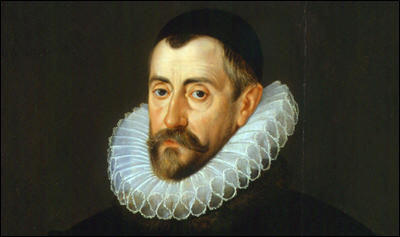
On this day in 1884 Elsie Howley, the daughter of Gertrude and Thomas Howey, rector of Finningley in Nottinghamshire, was born. She attended St Andrews University between 1902-1904. She lived for a while in Germany where she later claimed "she had first occasion to realise women's position."
Howey joined the Women's Social and Political Union (WSPU) and in February 1908 she was arrested for taking part in a demonstration outside the House of Commons. She was sentenced to six weeks' imprisonment and released on 18th March.
In May 1908, she joined Mary Blathwayt and Annie Kenney to help at a by-election in Shropshire. Blathwayt wrote in her diary: "This afternoon I helped Annie Kenney make her plans for a West of England campaign, I wrote out lists of towns and dates which are to be sent to Mrs. Pankhurst and Mrs. Pethick Lawrence. This evening Miss Howey went round the town with some steps, and I went with her. And when we came to a crowd she got onto the steps and shouted Keep the Liberal out. Votes for Women".
Elsie Howey was arrested for the second time after taking part in a demonstration outside the home of Herbert Asquith. She was sentenced to three months' imprisonment. On her release she and Vera Wentworth were met at the gates of Holloway Prison and then drawn by 50 women on a carriage to Queen's Hall. On her arrival she was presented with bouquets in the suffragette colours and with illuminated scrolls designed by Sylvia Pankhurst to commemorate their imprisonment.
Emmeline Pethick-Lawrence wrote an article in Votes for Women in February 1909: "I say to you young women who have private means or whose parents are able and willing to support you while they give you freedom to choose your vocation. Come and give one year of your life to bringing the message of deliverance to thousands of your sisters... Miss Elsie Howey is honorary organiser in Plymouth. She is the daughter of Mrs. Howey, of Malvern. Mrs. Howey and her two daughters have given generously of all that they have, but the best prized gift is the life-work of this noble girl who has undergone two periods of imprisonment for the sake of women less privileged and happily placed than herself. She is one of our most able and successful organisers, and takes all the duties and responsibilities of our chief officers."
Howey, who was described by the mother of Mary Blathwayt as being "a wonderful speaker" went to work with Annie Kenney who was based in Bristol. During this period she was a visitor to Eagle House at Batheaston. Others who spent time at Blathwayt's house included Christabel Pankhurst, Clara Codd, Constance Lytton, Vera Wentworth, Jessie Kenney, Annie Kenney, Clare Mordan and Helen Watts. Colonel Linley Blathwayt photographed the women. These were then signed and sold at WSPU bazaars. He also invited them to plant a tree to commemorate their prison sentences and hunger strikes.
On 16th April 1909 Howey rode as Joan of Arc at the head of the procession to welcome Emmeline Pethick-Lawrence on her release from Holloway Prison. On 30th July she was arrested with Vera Wentworth for demonstrating at a meeting held in Penzance by Lord Carrington. They were sentenced to seven days' imprisonment and both women went on hunger strike. Howey fasted for 144 hours and on her release she went to stay at Eagle House at Batheaston.
On 5th September she was involved with Vera Wentworth and Jessie Kenney in assaulting Herbert Asquith and Herbert Gladstone while they were playing golf. Emily Blathwayt was horrified by this increase in violence. On 7th September she wrote in her diary: "We hear of terrible things by the two Hooligans we know, Vera and Elsie and there is a Kenney in it. They made a regular raid on Mr. Asquith breaking a window and using personal violence. Then missiles have been thrown lately through windows during Cabinet Members meetings which might injure or kill innocent persons."
The following day Emily Blathwayt sent a letter to the WSPU headquarters: "Dear Madam, with great reluctance I am writing to ask that my name may be taken off the list as a Member of the W.S.P.U. Society. When I signed the membership paper, I thoroughly approved of the methods then used. Since then there has been personal violence and stone throwing which might injure innocent people. When asked by acquaintances what I think of these things I am unable to say that I approve, and people of my village who have hitherto been full of admiration for the Suffragettes are now feeling very differently. Colonel Linley Blathwayt wrote to Christabel Pankhurst complaining about the behaviour of Elsie Howey and Vera Wentworth and suggested that they would no longer be welcome at Eagle House.
Colonel Blathwayt also wrote letters to Wentworth and Howley about their behaviour. He said that "an attack on one undefended man by three women was an act I did not expect from the Society". According to Emily Blathwayt, they received a "long letter from Vera Wentworth who is very sorry we are grieved but if Mr. Asquith will not receive deputation they will pummel him again." She also claimed that Herbert Gladstone gave Jessie Kenney "a nasty blow in the chest".
Howey was arrested with Constance Lytton on 14th January 1910 and sentenced to six weeks' hard labour. Votes for Women described Howey as: "A devoted honorary organiser who gives the whole of her services and the whole of her life to the Cause. She is a beautiful, refined, and charming girl."
Howey was inactive in 1911 but was arrested again in March 1912 when she took part in the WSPU window-smashing campaign. She was found guilty and sentenced to four months' imprisonment. At the end of 1912 she was back in Holloway Prison for setting-off a fire-alarm. She went on hunger strike and was forcibly fed. Elsa Gye commented that the injuries inflicted during the force-feeding meant that "her beautiful voice was quite ruined." In June 1913 Howey played the role of Joan of Arc at the funeral of Emily Wilding Davison.
Her biographer, Krista Cowman, wrote: "Tired and ill, Elsie vanished from public life when militancy ended in 1914. She remained in Malvern but followed no career, and never fully recovered from the sacrifices she made in the name of the WSPU.
Elsie Howley died on 13 March 1963 at the Court House Nursing Home, Court Road, Malvern, from chronic pyloric stenosis, almost certainly connected to her numerous forcible feedings."
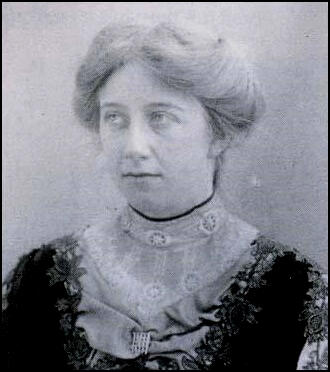
On the day in 1886 Rex Stout, one of the nine children of John Wallace Stout and Lucetta Elizabeth Todhunter, was born in Noblesville, Indiana. Stout attended Topeka High School in Kansas, and the University of Kansas.
In 1906 Stout joined the U.S. Navy. He left after two years and he later claimed that over the next four years he worked at about thirty different jobs. His main ambition was to be a writer and sold several stories and articles in magazines. Stout made much more money from inventing a school banking system for which he received royalties. In 1916 he married Fay Kennedy and spent the next few years travelling around Europe.
On his return to the United States Stout became associated with liberal causes such as the American Civil Liberties Union (ACLU). Stout became friends with Roger Baldwin, Scott Nearing, Oswald Garrison Villard, Norman Thomas, Jane Addams, Chrystal Eastman, Clarence Darrow, John Dewey, Abraham Muste, Elizabeth Gurley Flynn and Upton Sinclair. In 1925 Baldwin appointed him to the Board of the ACLU's powerful National Council on Censorship. Stout also contributed $4,000 to get the radical magazine, The New Masses, started. However, Michael Gold, the editor, allowed the magazine to become a strong supporter of the Soviet Union, and non-communists such as Stout, Max Eastman and Floyd Dell ceased to become involved in the journal.
Stout's first book, How Like a God, was published in 1929 while he was living in Paris. He returned to the United States and in 1934 published the political thriller, The President Vanishes (1934). The book concerns the mysterious disappearance of the president who was facing impeachment, over his foreign policy that might result in a war. It eventually becomes clear that the president has staged his own disappearance to counter an impending military coup. It was later argued that the novel was based on President Franklin D. Roosevelt and his problems with the political conspiracy alleged by Major General Smedley Butler in 1933. Jacques Barzun has argued: "To a reader of keener political-mindedness... this may be a sufficiently gripping tale. A peace-loving president, in a period of European anxiety about war, is kidnapped. The reason for the deed is as surprising as the perpetrator."
Later that year Rex Stout published the detective novel, Fer-de-Lance. This introduced the public to Nero Wolfe and his assistant Archie Goodwin. It has been argued by Frederick Isaac that: "Rex Stout's Fer-de-Lance, then, may be said to have heralded the beginning of several eras. It was, first and foremost, the opening of one of America's best detective series, introducing Nero Wolfe and Archie Goodwin and their world to generations of readers. Second, Archie's presence raises serious questions about the possible roles that the detective's assistant could and should play in the investigative process, some of which remain open even today... Third, Wolfe and Archie began to redefine the relationship between the two traditions of the Great Detective and the hard-boiled sleuth ... By identifying both of these strands and personifying them in Wolfe and Archie, Stout challenged the world of detection to analyze itself. The genre has never been the same since." Stout followed the novel with other Nero Wolfe stories: The League of Frightened Men (1935), The Rubber Band (1936), The Red Box (1937), Too Many Cooks (1938) and Some Buried Caesar (1939).
Stout was a strong critic of Adolf Hitler and his Nazi Government and according to his biographer, John J. McAleer, the author of Rex Stout - A Majesty's Life (1977), Stout was an agent of the British Security Coordination (BSC) and helped them to establish the Fight for Freedom (FFF) organisation. "Rex Stout was not only an officer in the BSC front Friends of Democracy and a major spokesman for another BSC front, Fight for Freedom, he also admits to working directly for BSC agent Donald MacLaren." Peter Cusick, the Executive Secretary of the FFF, later recalled: "Rex Stout was the nicest angry man I knew in the Hitler period... His anger and brilliance contributed in an extraordinary way to the successful efforts of both the Committee and the Board to alert the country, as a whole, to existing dangers."
Thomas E. Mahl, the author of Desperate Deception: British Covert Operations in the United States, 1939-44 (1998), agrees: "Rex Stout, the mystery writer and interventionist who had worked long and diligently with the BSC front Friends of Democracy." Another member of the BSC, George Merten, later recalled: "Rex Stout deserves honor and credit for exposing himself at that time for a cause which was not too popular in influential, especially corporation quarters."
Other members of Fight for Freedom included Ulric Bell, (Executive Chairman), Peter Cusick (Executive Secretary), Allen W. Dulles, Joseph Alsop, Henry Luce, Dean G. Acheson, James P. Warburg, Marshall Field III, Fiorello LaGuardia, Lewis William Douglas, Carter Glass, Harold K. Guinzburg, Conyers Read, Spyros Skouras and Henry P. Van Dusen. The group also contained several journalists such as Herbert Agar (Louisville Courier-Journal), Geoffrey Parsons (New York Herald Tribune), Ralph Ingersoll (Picture Magazine) and Elmer Davis (CBS).
On 21st April, 1941, Stout made a speech in New York City where he attacked the activities of Charles Lindbergh: "I wish I could look you in the eye, Colonel Lindbergh, when I tell you that you simply don't know what it's all about.... A desperate war is being fought, and the winners of the war will win the oceans. No matter what we do, we shall be either one of the winners, or one of the losers; no shivering neutral will get a bite of anything but crow when the shooting stops. It would therefore seem to be plain imbecility not to go in with Britain and win.... Every fascist and pro-Nazi publication in America, without exception, applauds and approves of him.... Dozens of times in the past year he has been enthusiastically quoted in the newspapers of Germany and Italy and Japan."
Stout then went onto defend himself against the attacks he had received from America First Committee: "The America First Committee is calling people like me, who are convinced that we should go in with Britain now and win, a gang of warmongers.... If a 1941 warmonger is a man who advocates that we should immediately send warships and the men we have trained to sail them and shoot their guns, and airplanes and the boys we have trained to fly them and drop their bombs, send them to meet our acknowledged deadly enemy where he is, and attack him and defeat him, then count me in."
In 1941 BSC agent Donald MacLaren employed Rex Stout, George Merton (another BSC agent) and Sylvia Porter of the New York Post, to write a propaganda booklet entitled Sequel to the Apocalypse: The Uncensored Story: How Your Dimes and Quarters Helped Pay for Hitler's War. It was published in March 1942. Stout also hosted three weekly radio shows, and coordinated the volunteer services of American writers to help the war effort.
After the Second World War Rex Stout returned to writing Nero Wolfe novels. This included Instead of Evidence (1946), The Silent Speaker (1946), Too Many Women (1947), Before I Die (1947), More Deaths Than One (1948), Three Doors to Death (1949), Trouble in Triplicate (1949), The Second Confession (1949) and Disguise for Murder (1950).
Red Channels was published on 22nd June, 1950. Written by Ted C. Kirkpatrick, a former FBI agent and Vincent Hartnett, a right-wing television producer, it listed the names of 151 writers, directors and performers who they claimed had been members of subversive organisations before the Second World War but had not so far been blacklisted. Stout immediately condemned the publication of this document. A strong opponent of McCarthyism, Stout believed the activities of Joseph McCarthy helped Communism by making anti-Communism seem reactionary.
Rex Stout protested against the execution of Julius Rosenberg and Ethel Rosenberg. He was highly critical of Harry Gold, David Greenglass and Elizabeth Bentley, who had provided evidence against the Rosenbergs. As his biographer pointed out: "Gold had since admitted that he perjured himself. Greenglass, Ethel's brother, had been described by his own wife as a pathological liar. In a subsequent case, Elizabeth Bentley's status as an incorrigible liar was established to the satisfaction of the courts."
Other books during this period by Stout included The Golden Spiders (1953), Three Men Out (1954), The Black Mountain (1954), Before Midnight (1955), Three Witnesses (1956), Might as Well Be Dead (1956), Three for the Chair (1957), If Death Ever Slept (1957), The Final Deduction (1961), Homicide Trinity (1962) and The Mother Hunt (1963).
J. Edgar Hoover told his FBI agents to keep a close watch of Rex Stout. This probably dates back to the work he did with anti-fascist group in the 1930s that Hoover considered to be under the control of the American Communist Party. Hoover was also suspicious of his leadership of the Authors League of America that was a target of Joseph McCarthy.
Stout had also made it clear that he disapproved of Hoover who had discribed Martin Luther King as the "biggest liar in the world". Stout said that: "Hoover is a megalomaniac, although I detest that word. He appears totally egocentric, and in addition to other things he is narrow-minded. I think his whole attitude makes him an enemy of democracy... I think he is on the edge of senility."
It has been pointed out that about a third of Stout's FBI file is devoted to his 1965 novel, The Doorbell Rang. The novel concerns the publication of The FBI Nobody Knows (1964) by Fred J. Cook. In the novel, the wealthy Mrs. Rachel Bruner buys 10,000 copies of Cook's book and sends them to persons of influence, including cabinet members, Supreme Court justices, members of Congress and heads of corporations. Bruner believes that as a result of her actions she is being persecuted by the FBI and employs Nero Wolfe to investigate the organization.
Stout was someone who had grave doubts about the Warren Commission Report and created a great deal of controversy when he praised Rush to Judgment, a book on the assassination of John F. Kennedy by Mark Lane. He came under attack from several people, including George Field, who condemned the book as "undermining confidence in our democratic processes". Stout replied: "If the devil himself writes a book, and the publisher sends me an advance copy, asking for a quotable comment if I think it deserves one, and I read it and find it is a good job, I shall certainly say so. Also I regard Rush to Judgment as a useful contribution to a necessary controversy." Rex Stout died on 27th October, 1975.
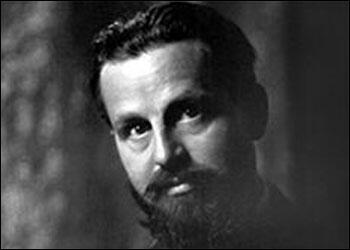
On this day in 1893 Dorothy Detzer was born in Fort Wayne, Indiana. Her father, August Detzer, was a drugstore owner and her mother, Laura Goshorn Detzer, was a librarian. She later described her childhood in her autobiography: "In my early teens there was a brief period when I decided to be a toe dancer and, as a dying swan, to swoon in a heap of tulle and tossed bouquets just as Pavlova did. As I was a fairly good dancer this dream was not wrought merely out of romantic fantasy, but it was a dream which received little encouragement from my wide-awake family. I was reminded that I was no beauty, and that the success of a professional dancer lay along a road paved with grueling work and perpetual heartbreak. So the dream died like the swan, leaving no tangible residue except a correct posture and overmuscular ankles. During this period, I certainly never thought about the issues of war and peace. I learned from snatches of grownup conversation that the Spaniards were dreadful people who had once blown up an American ship, and that the droopily mustached Dewey whose picture dominated the center of some blue World's Fair plates was a great American hero. Then there was also the bedtime story of Jackanapes. From it I gathered that war was a sad but beautiful adventure. Its closing paragraphs led one through a series of rhetorical questions to noble heights."
In her late teens Detzer spent time travelling in the Far East before settling in Chicago, where she went to live in Hull House where she met Jane Addams, Ellen Starr, Julia Lathrop, Florence Kelley, Edith Abbott, Grace Abbott, Alice Hamilton, Charlotte Perkins, William Walling, Charles Beard, Mary McDowell, Mary Kenney, Alzina Stevens and Sophonisba Breckinridge. Working-class women, such as Kenney and Stevens, who had developed an interest in social reform as a result of their trade union work, played an important role in the education of the middle-class residents at Hull House. They in turn influenced the working-class women. As Kenney was later to say, they "gave my life new meaning and hope". Detzer also studied at the Chicago School of Civics and Philanthropy while working as an officer of the Juvenile Protective Association.
During the First World War her twin brother, Donald Detzer, served in the United States Army. In 1918, while serving in a Field Hospital, he was a victim of a mustard gas attack. His lungs were badly damaged and he eventually died from a related illness. As a result of this, Dorothy became a pacifist. She later recalled: "Yet the movement for peace which developed during the crucial years which spanned two wars was never a private crusade; it was a co-operative, shared adventure. A movement rises out of the expanded aspirations of a few, and those who are identified with it soon recognize that painful but paradoxical truth: how unimportant to a movement is any individual - and how important."
After working for the American Friends Service Committee (AFSC) in Europe she returned to the United States and became national secretary of the Women's International League for Peace and Freedom (WILPF). Her primary job was to lobby senators and representatives in Washington D.C. In Appointment on the Hill (1948) she argued: "I became a lobbyist. No doubt, to many Americans, such an avowal can only appear as a bold and shameless confession. For I know that to the general public, lobbying is a vocation tainted with many unsavory connotations. Perhaps this is natural since virtue is rarely news, and hence it is the disreputable lobbyists who invariably make the headlines. But there are good lobbyists as well as bad, and the good ones, I believe, have contributed in no small measure to the vitality and integrity of American political democracy. For American political democracy is no myth; it is a manifest reality. Out of my own long experience as a lobbyist in Washington, that fact, I believe, stands out in my mind more sharply than any other. Moreover, it is a fact which never ceased to surprise me. For the United States covers an enormous geographic area; it functions under a complicated, and sometimes clumsy, government machinery; it is infested by alert, moneyed interests; it is always contaminated by the unethical and unscrupulous breed of lobbyists."
According to Harriet Hyman Alonso: "Legislators respected Detzer for her thorough research, persuasive manner, and great integrity, knowing full well that the fashionable, outspoken Lady Lobbyist (as she was known) would accept no personal favours, private dinners or backroom deals that would compromise her work." Detzer lobbied Congress for legislation to allow alien conscientous objectors to become U.S. citizens, to end lynching, for the removal of U.S. troops in Haiti and Nicaragua and for the 1928 Kellog-Briand Pact. Along with Mabel Vernon she co-ordinated the petition campaign that collected more than half a million U.S. signatures in support of universal disarmament.
In 1933 Dorothy Detzer approached Gerald P. Nye, George Norris and Robert La Follette and asked them to instigate a Senate investigation into the international munitions industry. They agreed and on 8th February, 1934, Nye submitted a Senate Resolution calling for an investigation of the munitions industry by the Senate Foreign Relations Committee under Key Pittman of Nevada. Pittman disliked the idea and the resolution was referred to the Military Affairs Committee. It was eventually combined with one introduced earlier by Arthur H. Vandenberg of Michigan, who sought to take the profits out of war.
Public hearings before the Munitions Investigating Committee began on 4th September, 1934. In the reports published by the committee it was claimed that there was a strong link between the American government's decision to enter the First World War and the lobbying of the the munitions industry. The committee was also highly critical of the nation's bankers. In a speech in 1936 Gerald P. Nye argued that "the record of facts makes it altogether fair to say that these bankers were in the heart and center of a system that made our going to war inevitable".
Hede Massing met Dorothy Detzer at the home of Noel Field in 1935: "A friendship with her started that was to last. She was, at the time, the secretary of the Woman's International League for Peace and Freedom in Washington... Here was a person I liked, who taught me more than anyone else about the workings of democracy in the United States.... I am proud to say that we are intimate friends today, and that our friendship has only deepened through the years."
Detzer left the Women's International League for Peace and Freedom in 1946. She now spent her time looking after her ageing parents and writing her memoirs, Appointment on the Hill (1948). A close friend of Norman Thomas, she was also active in his Post War World Council, a group that was committed to developing plans for peace that would prevent all future wars.
In 1954 Detzer married the journalist and long-term friend, Ludwell Denny. They spent the next few years working for the Scripps-Howard organization. After her husband's death in 1970 she moved to Monterey, California, where she died on 7th January, 1981.
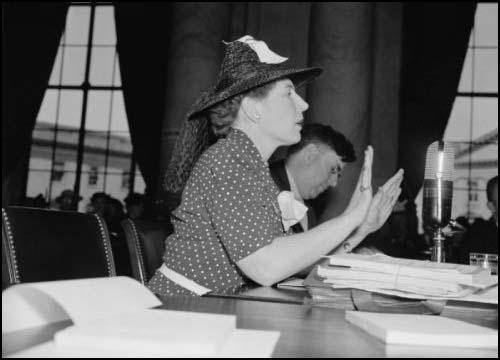
On the day in 1917 The Daily Chronicle reports on a cavalry attack on the Western Front. At the beginning of the First World War, mounted troops were still considered as the main component of offensive warfare. In battle, members of the cavalry carried a sword, rifle (for use when dismounted) and sometimes a lance. Cavalry regiments were also equipped with one or two machine guns carried by a team and cart.
In 1914 most of the major armies had around a third of their strength in horsemen. The British, French and German armies all considered their cavalry to be an elite force and had considerable influence over the tactics used during battles. Nearly all the senior officers in the British Army were ex-cavalry officers and it has been claimed that this explained the type of tactics used on the Western Front.
The cavalry were of limited value in trench warfare. However, during major offensives, mounted troops were still massed in large numbers waiting the opportunity to charge the enemy lines. When the cavalry were used on the Western Front it was found to be completely ineffective against machine gun fire. The British cavalry was more successful against less well-organised armies such as the Turks during the Battle of Gaza.
On 1st December, 1917, the The Daily Chronicle reported a joint cavalry and tank attack: "The battle has continued today, and our troops and tanks have been engaged in heavy fighting round Borlon Wood and at Fontaine-Notre-Dame, to the east of it, which we lost yesterday for a time, after a sharp counter-attack upon our Seaforth Highlanders, who entered it on Wednesday night with tanks. Tanks and cavalry co-operated in this attack, and the tanks were a most powerful aid, and cruised round and through the village, where they put out nests of machine-guns. The cavalry then went on into Anneux; but the first patrol had to retire because of the fierce machine-gun fire that swept down the streets."
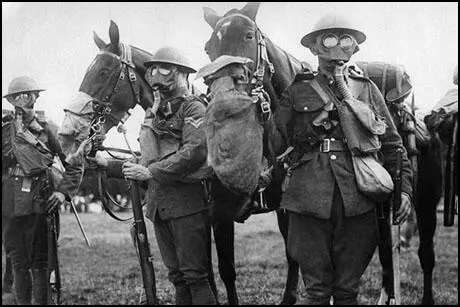
On the day in 1934 Joseph Stalin had Sergei Kirov murdered. In 1926 Kirov was appointed head of the Leningrad party organization. He joined the Politburo in 1930 and now one of the leading figures in the party, and many felt that he was being groomed for the future leadership of the party by Stalin. However, this was not the case as Stalin saw him as a rival. As Edward P. Gazur has pointed out: "In sharp contrast to Stalin, Kirov was a much younger man and an eloquent speaker, who was able to sway his listeners; above all, he possessed a charismatic personality. Unlike Stalin who was a Georgian, Kirov was also an ethnic Russian, which stood in his favour."
In the summer of 1932 Martemyan Ryutin wrote a 200 page analysis of Stalin's policies and dictatorial tactics, Stalin and the Crisis of the Proletarian Dictatorship. Ryutin argues: "The party and the dictatorship of the proletariat have been led into an unknown blind alley by Stalin and his retinue and are now living through a mortally dangerous crisis. With the help of deception and slander, with the help of unbelievable pressures and terror, Stalin in the last five years has sifted out and removed from the leadership all the best, genuinely Bolshevik party cadres, has established in the VKP(b) and in the whole country his personal dictatorship, has broken with Leninism, has embarked on a path of the most ungovernable adventurism and wild personal arbitrariness."
Ryutin also wrote up a short synopsis of the work and called it a manifesto and circulated it to friends. General Yan Berzin obtained a copy and called a meeting of his most trusted staff to discuss and denounce the work. Walter Krivitsky remembers Berzen reading excerpts of the manifesto in which Ryutin called "the great agent provocateur, the destroyer of the Party" and "the gravedigger of the revolution and of Russia."
Stalin interpreted Ryutin's manifesto as a call for his assassination. When the issue was discussed at the Politburo, Stalin demanded that the critics should be arrested and executed. Stalin also attacked those who were calling for the readmission of Leon Trotsky to the party. Kirov, who up to this time had been a staunch Stalinist, argued against this policy. Gregory Ordzhonikidze, Stalin's close friend, also agreed with Kirov. When the vote was taken, the majority of the Politburo supported Kirov against Stalin.
On 22nd September, 1932, Martemyan Ryutin was arrested and held for investigation. During the investigation Ryutin admitted that he had been opposed to Stalin's policies since 1928. On 27th September, Ryutin and his supporters were expelled from the Communist Party. Ryutin was also found guilty of being an "enemy of the people" and was sentenced to a 10 years in prison. Soon afterwards Gregory Zinoviev and Lev Kamenev were expelled from the party for failing to report the existence of Ryutin's report. Ryutin and his two sons, Vassily and Vissarion were later both executed.
At the 17th Party Congress in 1934, when Sergei Kirov stepped up to the podium he was greeted by spontaneous applause that equalled that which was required to be given to Joseph Stalin. In his speech he put forward a policy of reconciliation. He argued that people should be released from prison who had opposed the government's policy on collective farms and industrialization. The members of the Congress gave Kirov a vote of confidence by electing him to the influential Central Committee Secretariat.
Stalin now found himself in a minority in the Politburo. After years of arranging for the removal of his opponents from the party, Stalin realized he still could not rely on the total support of the people whom he had replaced them with. Stalin no doubt began to wonder if Kirov was willing to wait for his mentor to die before becoming leader of the party. Stalin was particularly concerned by Kirov's willingness to argue with him in public. He feared that this would undermine his authority in the party.
As usual, that summer Sergei Kirov and Joseph Stalin went on holiday together. Stalin, who treated Kirov like a son, used this opportunity to try to persuade him to remain loyal to his leadership. Stalin asked him to leave Leningrad to join him in Moscow. Stalin wanted Kirov in a place where he could keep a close eye on him. When Kirov refused, Stalin knew he had lost control over his protégé. According to Alexander Orlov, who had been told this by Genrikh Yagoda, Stalin decided that Kirov had to die.
Yagoda assigned the task to Vania Zaporozhets, one of his trusted lieutenants in the NKVD. He selected a young man, Leonid Nikolayev, as a possible candidate. Nikolayev had recently been expelled from the Communist Party and had vowed his revenge by claiming that he intended to assassinate a leading government figure. Zaporozhets met Nikolayev and when he discovered he was of low intelligence and appeared to be a person who could be easily manipulated, he decided that he was the ideal candidate as assassin.
Zaporozhets provided him with a pistol and gave him instructions to kill Kirov in the Smolny Institute in Leningrad. However, soon after entering the building he was arrested. Zaporozhets had to use his influence to get him released. On 1st December, 1934, Nikolayev, got past the guards and was able to shoot Kirov dead. Nikolayev was immediately arrested and after being tortured by Genrikh Yagoda he signed a statement saying that Gregory Zinoviev and Lev Kamenev had been the leaders of the conspiracy to assassinate Kirov.
According to Alexander Orlov: "Stalin decided to arrange for the assassination of Kirov and to lay the crime at the door of the former leaders of the opposition and thus with one blow do away with Lenin's former comrades. Stalin came to the conclusion that, if he could prove that Zinoviev and Kamenev and other leaders of the opposition had shed the blood of Kirov". Victor Kravchenko has pointed out: "Hundreds of suspects in Leningrad were rounded up and shot summarily, without trial. Hundreds of others, dragged from prison cells where they had been confined for years, were executed in a gesture of official vengeance against the Party's enemies. The first accounts of Kirov's death said that the assassin had acted as a tool of dastardly foreigners - Estonian, Polish, German and finally British. Then came a series of official reports vaguely linking Nikolayev with present and past followers of Trotsky, Zinoviev, Kamenev and other dissident old Bolsheviks."
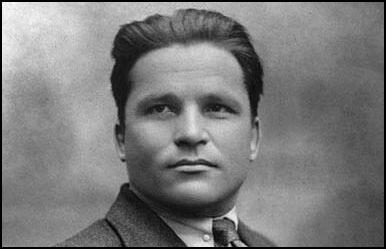
On the day in 1941 Emperor Hirohito officially approves the attack on Pearl Harbor. On the island of Oahu, it had been used by the US Navy since the early part of the twentieth century. In April, 1940, the US Fleet had been sent to Pearl Harbor to deter aggressive moves by Japan in the Pacific. The Commander in Chief of the Japanese Combined Fleet, Admiral Isoruku Yamamoto began planning for a surprise attack on the US Navy at Pearl Harbor early in 1941. Yamamoto feared that he did not have the resources to win a long war against the United States. He therefore advocated a surprise attack that would destroy the US Fleet in one crushing blow. Yamamoto's plan was eventually agreed by the Japanese Imperial Staff in the autumn and the strike force under the command of Vice Admiral Chuichi Nagumo sailed from the Kurile Islands on 26th November, 1941.
On Sunday, 7th December, 1941, 105 high-level bombers, 135 dive-bombers and 81 fighter aircraft attacked the US Fleet at Pearl Harbor. The damage caused was initially underestimated: "The Japanese, without any warning, yesterday afternoon began war on the United States with air attacks on the naval base at Pearl Harbor, Hawaii, and the adjacent city of Honolulu. Imperial Headquarters in Tokyo later announced that Japan had entered into a state of war with Britain and the United States in the Western Pacific from 6 a.m. today... As more than 150 planes took part in the attacks on Pearl Harbor and Honolulu, it is thought that there must be at least three Japanese aircraft-carriers, and probably more, engaged. Several planes were shot down. Considerable damage was done at Pearl Harbour and there were numerous casualties. It is officially announced that the Army casualties were 104 killed and 300 wounded. It is thought that these occurred when the airfield was hit. The civilian casualties are unknown."
It was later confirmed that the Japanese sunk the Arizona, Oklahoma, West Virginia and California. Four further battleships were damaged and eleven other warships were sunk or disabled. Another 188 American aircraft were destroyed on the ground and 2,330 Americans were left dead or dying. The Japanese had lost twenty-nine aircraft and five midget submarines in the attack. "As the scale of the American losses became known, the shock in the United States was considerable; of the nine American battleships capable of offensive or defensive action in the Pacific earlier that morning, only two remained able to enter combat. Japan's ten battleships were masters of the Pacific."
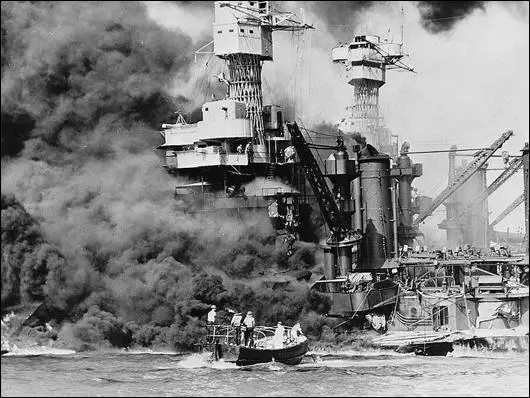
On the day in 1955, Rosa Parks, refused to give up her seat to a white man. In Montgomery, like most towns in the Deep South, buses were segregated. Rosa Parks and other civil rights activists considered using CORE tactics in Montgomery. However, under pressure from the NAACP, this never took place. Thurgood Marshall, head of the NAACP's legal department, was strongly against these tactics and warned that a "disobedience movement on the part of Negroes and their white allies, if employed in the South, would result in wholesale slaughter with no good achieved."
In early 1955, Claudette Colvin, a 15 year old black girl was dragged off a bus in Montgomery and arrested for not giving up her seat to a white person. The NAACP now agreed to take up the Colvin incident as a test case. It believed that this would result in a similar outcome to the 1954 Supreme Court decision on segregation in education. However, the NAACP decided to drop the idea when they discovered that Colvin was pregnant. They knew that the authorities in Montgomery would use this against them in the propaganda war that would inevitably take place during this legal battle.
On 1st December, 1955, Rosa Parks, left Montgomery Fair, the department store where she worked, and got on the same bus as she did every night. As always she sat in the "black section" at the back of the bus. However, when the bus became full, the driver instructed Rosa to give up her seat to a white person. This had happened to Rosa several times before. In fact, the same bus driver had forced her off the bus in 1943 for committing the same offence. Once again she refused and was arrested by the police. She was found guilty of violating the segregation law and fined.
It was only at this stage, after consulting friends and family, that she decided to approach the NAACP and volunteer to become a test case. This was a brave decision as she knew it would result in persecution by the white authorities. For example, Parks was immediately sacked from her tailoring job with Montgomery Fair.
Martin Luther King, a pastor at Dexter Avenue Baptist Church, agreed to help organize protests against bus segregation. It was decided that from 5th December, black people in Montgomery would refuse to use the buses until passengers were completely integrated. King was arrested and his house was fire-bombed. Edgar Nixon suffered the same fate. Others involved in the Montgomery Bus Boycott also had to endure harassment and intimidation, but the protest continued.
For thirteen months the 17,000 black people in Montgomery walked to work or obtained lifts from the small car-owning black population of the city. Eventually, the loss of revenue and a decision by the Supreme Court forced the Montgomery Bus Company to accept integration, and the boycott came to an end on 20th December, 1956. After the success of this campaign, Parks became known as the "mother of the Civil Rights Movement".
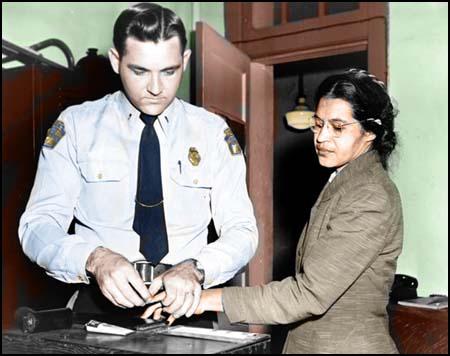
On the day in 1964 John Haldane died. Haldane, the son of a physiologist, John Scott Haldane, and the brother of Naomi Mitchison, was born in Oxford on 1st November, 1892. Educated at Dragon School and Eton College he won a mathematical scholarship to Oxford University and obtained a first class honours degree in 1912. He then switched to science and carried out research into genetics.
On the outbreak of the First World War Haldane joined the British Army. He was initially a Bombing Officer for the Third Battalion of the Black Watch before becoming a Trench Mortar Officer in the First Brigade. While in the army Haldane became a socialist. He wrote at the time: "If I live to see an England in which socialism has made the occupation of a grocer as honourable as that of a soldier, I shall die happy."
In the summer of 1915 he was wounded and was sent back to England. After recovering he helped train new recruits in the use of grenades. In 1916 he rejoined the Black Watch in Mesopotamia but later that year he was injured by an exploding bomb and was taken to India to recover.
After the war he returned to his research at Oxford University before becoming a lecturer in Biochemistry at Cambridge University in 1922. He also conducted research on enzymes and the mathematics of natural selection and published a best-selling book called Daedalus, Or Science and The Future (1924).
In 1924 Haldane was interviewed by Charlotte Burghes, a journalist working for the Daily Express. They soon became close friends and in October 1925 they set up the Science News Service, an agency syndicating articles by them on the latest scientific discoveries. These articles appeared in national newspapers and helped to educate people about modern science.
In order to obtain a divorce from her husband, Charlotte Burghes arranged with a private detective to spend the night with John Haldane at the Adelphi Hotel in London. On 20th October 1925 Jack Burghes successfully obtained a divorce on the grounds of adultery. The case received national publicity and as a result Haldane was dismissed from his post at Cambridge University for "gross immorality". The couple were married on 11th May 1926.
Over the next few years Haldane published a series of books including Animal Biology (1927), Possible Worlds (1927) and Science and Ethics (1928). Along with his close friend, the physicist John Bernal, Haldane became convinced that the world's problems could only be solved if scientists had greater influence over government policy. He argued: "If we are to control our own and one another's actions as we are learning to control nature, the scientific point of view must come out of the laboratory and be applied to the events of daily life. It is foolish to think that the outlook which has already revolutionized industry, agriculture, war and medicine will prove useless when applied to the family, the nation, or the human race."
In 1932 John Haldane was elected to the Royal Society and the following year became Professor of Genetics at University College in London. Three years later he showed the genetic link between haemophilia and colour blindness. Haldane also carried out research into how the regulation of breathing in man is affected by the level of carbon dioxide in the bloodstream. Books by Haldane during this period included The Inequality of Man (1932), Fact and Faith (1934), Heredity and Politics (1938) and Science in Everyday Life (1939).
During this period Haldane became heavily involved in left-wing politics. He was particularly concerned about the emergence of fascism in Germany and Italy. In 1933 he travelled to Spain where he gave his support to the Socialist Party (PSOE) and the Communist Party (PCE) in its struggle with the Falange Española and other extreme right-wing parties.
On the outbreak of the Spanish Civil War Haldane supported the Popular Front government and was highly critical of the British government's non-intervention policy. Haldane and his wife, Charlotte Haldane, both joined the Communist Party and were active in raising men and money for the International Brigades.
In May 1937 Charlotte Haldane joined with Duchess of Atholl, Eleanor Rathbone, Ellen Wilkinson and J. B. Priestley to establish the Dependents Aid Committee, an organization which raised money for the families of men who were members of the British Battalion in Spain. Whereas Haldane became chairman of the editorial board of the Daily Worker.
In August 1941 Charlotte Haldane began work as a war reporter in the Soviet Union the Daily Sketch. She was shocked at the level of censorship taking place under Joseph Stalin. For example, she discovered that the Russian people had not been told that England was being bombed by the Luftwaffe. Disillusioned by what she saw in the Soviet Union, Charlotte left the Communist Party when she returned to London in November 1941. She later wrote that membership of the party and affected her journalism: "I had lied, cheated, acted under false pretenses, obeyed and carried out orders from on high, denied all my inner ethical tenets and spiritual codes for the good of the cause, convincing myself that the end justified the means."
By this time their relationship had broken down and Haldane obtained a divorce from his wife in November 1945. He remained a member of the Communist Party and was a regular contributor to the Daily Worker. In 1948 questions were asked in the House of Commons about whether communists like Haldane had access to official secrets. Haldane was quick to defend himself against these attacks. On 15th March 1948 he said: "I certainly am a Communist - as good a Communist as anyone. I am working on two Government scientific committees, one of which deals with under-water physiology. They don't pay me anything and they can throw me off them if they want to. But if they'd thrown me off six months ago, they might not have had certain increased efficiency in under-water craft. They can go on sacking people, but the only result will be that all sorts of people will be denounced as Communists when they are not. If I got orders from Moscow I would leave the Communist party forthwith."
Haldane continued to work closely with scientists in the Soviet Union. However, there was a purge of Soviet scientists after the Second World War. Haldane's great friend, Nikolai Vavilov, Head of the Institute of Genetics, was dismissed and sent to Siberia where he died. Haldane was appalled by this interference in science and in 1950 left the Communist Party.
In 1957 John Haldane emigrated to India in protest at the Anglo-French invasion of Suez. He worked at the Indian Statistical Institute in Calcutta before becoming head of the Orissa State Genetics and Biometry Laboratory in 1962.
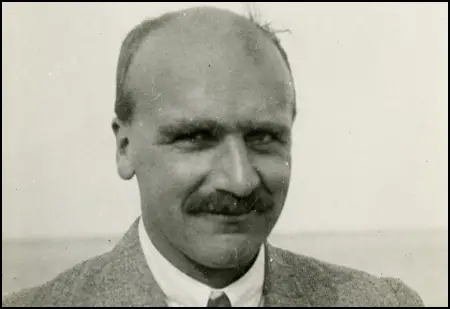
On the day in 1987 James Baldwin, died. Baldwin, the eldest of nine children, was born in Harlem in New York City, on 2nd August, 1924. His father was a preacher, and as a teenager he was active in a small revivalist church. After graduating from high school he worked in a series of menial jobs.
In 1948 Baldwin moved to Paris where he joined a group of black writers and artists that included Chester Himes, Richard Wright and Ollie Harrington. His first novel, Go Tell It on the Mountain (1953), concerned a young boy coming to terms with the religious beliefs of his father. His second novel, Giovanni's Room (1956) is an account of an American living in Paris.
In 1957 Baldwin return to the United States where he became involved in the struggle for civil rights. His next three books concerned the issue of racism. A book of essays, Nobody Knows My Name (1961), a novel, Another Country (1962), A Talk to Teachers (1963), and a book on the Black Muslim separatist movement, The Fire Next Time (1963). He followed this was the play about racist oppression, Blues for Mister Charlie (1964).
Other books by Baldwin include Going to Meet the Man (1965), Tell Me How Long the Train's Been Gone (1968), No Name in the Street (1972), If Beadle Street Could Talk (1974), The Devil Finds Work (1976), Just Above My Head (1979), Jimmy's Blues (1983), The Evidence of Things Not Seen (1985). A collection of autobiographical writings, The Price of the Ticket, was published in 1985.
